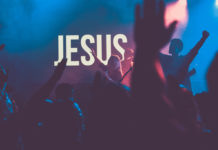The presence of video evolved greatly over the past decade. Where there was once debate about whether video was obfuscating the message, today it’s generally accepted that video is an essential component to helping people connect.
Interestingly, I see another trend. I think many people were concerned that as technology became more complex, the worship experience would suffer and become less authentic. Instead, I see the opposite happening. Simple video systems remind us of passive viewing. A standard projection screen is just like a bigger version of a TV. But people aren’t coming on Sundays to sit in their living room. They want to be involved.
Newer video systems break out of the traditional 16:9 mold. Wider aspect screens immerse us in an experience. Lighting can be synchronized with graphics, so that they become one collective experience instead of disparate systems. Lock-down shots show a teaching pastor at life-size, so that we increase the feeling of interaction with satellite campuses. Environmental projection takes us away to another place.
It’s not just the hardware that’s getting better either. It’s the software and the people using that software. Having the ability to cover all of the walls with projection wouldn’t be very effective if we weren’t able to also cost effectively create content that blends with the message. Today’s staff members and volunteers have the tools today to create engaging and appropriate content so that we are creating an experience, rather than just flashing images with expensive gadgets.
With this in mind, here are the top five trends that I have seen in Church Video System Design:
High-Quality IMAG
Two decades ago, the megachurch trend was in its prime. IMAG (Image Magnification) was an absolute necessity to get those standing on the stage to be visible to worshippers sitting in the seats all the way in the back. Today, we still have large facilities that require IMAG for the local viewers, but a larger component is often providing video for multisite campuses.
This changes several things about the way that we handle video. For one thing, this typically requires a much higher level of technical proficiency from the staff at the main campus (not to mention a larger staff). In addition to satellite campuses, there is frequently a requirement to provide web streaming.
All three of the requirements above can dictate slightly different production. The people in the main campus have a frame of reference, due to line of sight view to the stage. The worshipers at the satellite campus may have the advantage of two video feeds across multiple screens for immersion. By contrast, those viewing on the web will often only have a single window, with varying video quality, depending on bandwidth. This has an impact on equipment, staffing and workflow.
Multisite Video
I referenced this above, but it deserves its own mention. Almost every church that I have worked with in the past 10 years has some form of multisite requirement. I’ve seen everything from SneakerNet one-week delay, to streaming 10-minute time slip, to real-time interactive multicampus over dark fiber.
Each of these has very different requirements. It can be extremely easy to get in over your head. The best method is to start simple and build your way up. This can be more seamless if you put a growth plan in action from an early stage. Having a long-term plan also helps you to appropriately gauge infrastructure requirements.
Projection Blending
Blending has become so much easier and faster over the past few years. What used to require dedicated hardware is now frequently available onboard the projector. Projection blending is fantastic for creating an experience because it takes us out of the TV on a wall appearance of 16:9 aspect ratios that we are so accustomed to.
Just like any other technology, you have to be able to not just create it, but maintain it. This means you need to carefully evaluate staffing for both content creating and maintenance. There are also a few design pitfalls that you need to watch out for. Rear projection blends will always suffer from some degree of Doppler shift, due to the path difference between the light source at the projector and the reflection at the screen. You can clean up the blend with a camera and vectorscope, but the effect will shift as you move across the room. Fixing it in one spot breaks it in another. Sometimes you will just have to stay away from those seams during content creation.
Obviously, the more projectors you have in a rear projection setup, the worse this will become. To make matters worse, some types of projection lamps tend to experience color shift as they age, meaning that the effort that you spend in alignment will be quickly worthless. I know of at least one very large church whose well-known design consultant used these types of projectors in a large rear projection array. There is no projection solution to this problem. Once you’ve designed a building based on a large number of short throw projectors, you can do mirror bounce to reduce the amount of projectors and seams, but the distance to the rear wall will limit your overall size.
Next page: Lighting and projection automation and more …












